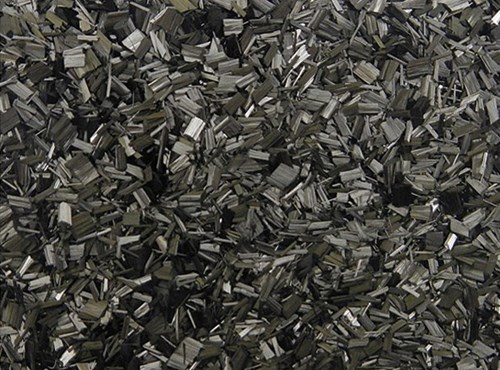Are LFRT composites key to auto adoption?
Long carbon fiber-reinforced thermoplastics don't pack the punch of continuous carbon fiber, but they might help spread use of composites in automotive.

, a little-known South Korean petrochemicals company based in Seoul, made a name for itself this week when it was reported to be in talks with electric car specialist Tesla Motors Inc. over the potential supply of long fiber-reinforced thermoplastics for use in Tesla vehicles. GS Caltex calls the material long carbon fiber-reinforced thermoplastic (CLFT). Properties of the material (fiber length, resin type, etc.) are unknown as yet.
Whether and to what extent Tesla employs CLFT in its vehicles, this news raises an interesting question that’s come up in the last few months as the automotive industry wrestles with the challenge of integrating composite materials into new vehicles. The question is this: If use of continuous carbon fiber in cars is too expensive, and if manufacturing processes are too slow, might long fiber-reinforced thermoplastics provide the stepping stone automakers need to start the migration to composites?
There’s much to like in long-fiber technology. First, the primary manufacturing process in which it’s used is injection or compression molding, both of which the automotive industry understands and has familiarity with. Second, several machinery suppliers, like Engel, Arburg and KraussMaffei, are working on injection technologies designed to minimize fiber shear, thus elongating fiber length in finished parts. This increases part strength and durability.
Third, there is at least some research that shows that even chopped carbon fiber provides a substantial fraction of the strength supplied by continuous carbon fiber. George Husman, chief technology officer at Zoltek (St. Louis, Mo., USA), reported at SAMPE Tech in Seattle last spring on research he’s done that shows just 0.7 mm of carbon fiber length provides 70 percent of theoretical modulus of continuous carbon fiber.
Such data require substantiation, but if it’s valid then it wouldn’t be hard to see that a long fiber-reinforced thermoplastic might easily find several homes in a car — at least in semi-structural parts, if not fully structural parts.
CW will investigate this further. Look for a more complete report soon.
Related Content
-
Clean Aviation's regional aircraft technology testbed #2 demonstrates advances with composites
European project advances OOA outer wing box using resin infusion and thermoplastic composite technologies.
-
Composite resins price change report
CW’s running summary of resin price change announcements from major material suppliers that serve the composites manufacturing industry.
-
Clean Sky 2 outer wing box demonstrator validates OOA LRI, shimless assembly and SHM
Full-scale wing box project achieves TRL 5 with 2% weight reduction and 4% reduction in recurring production costs through improved manufacturing efficiency and assembly processes.





